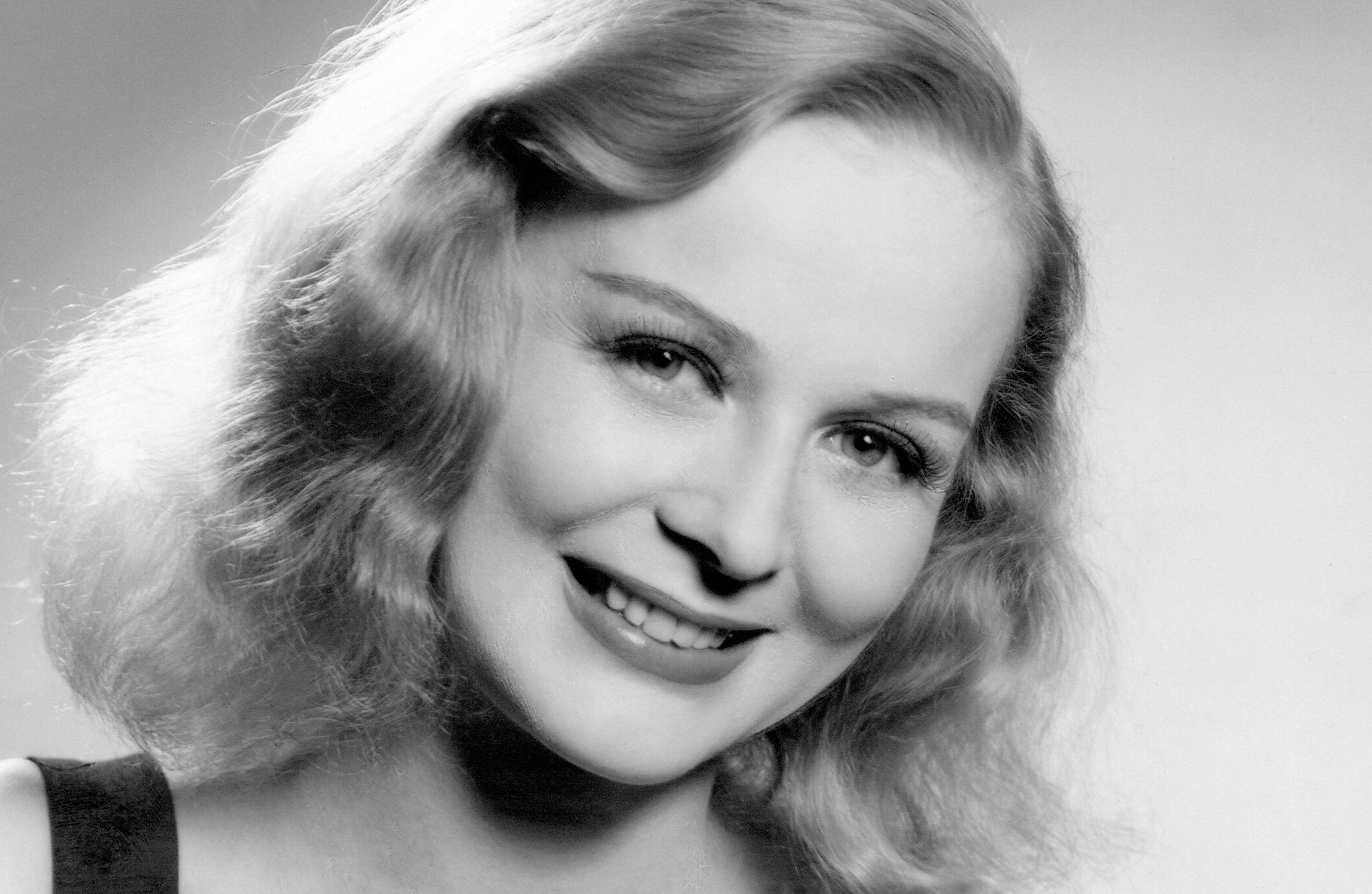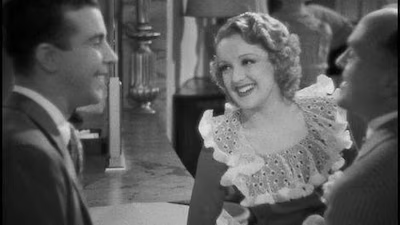Gloria Stuart

About
Biography
Filmography
Family & Companions
Bibliography
Notes
Stuart was one of the founders of the Screen Actors Guild in 1933.
"I really think film buffs remember me and my pictures better than I do. I suppose I should be flattered but my interests today are elsewhere." --Gloria Stuart quoted in the early 1970s
Biography
An elegant if underutilized leading lady of 1930s Hollywood, Gloria Stuart was best remembered for two classic horror films she made amid a great deal of routine studio product. She had brief experience on the stage before being courted by several major studios, and made her debut in 1932. Stuart soon became an in-demand female lead in all manner of genres, from dramas and light comedies to musicals and costume adventures. However, her most enduring films were two horror efforts for "Frankenstein" (1931) director James Whale - 1932's "The Old Dark House" and "The Invisible Man" (1933). Stuart abandoned acting in the late 1940s to pursue a successful career in art, but made sporadic returns in the mid-1970s. In 1997, some 60 years after her film debut, she earned her greatest critical praise and an Oscar nomination as the elderly Rose in James Cameron's epic, "Titanic." Stuart credited her late-inning stardom to patience, but clearly, her enduring talent and screen presence could claim equal responsibility.
Born Gloria Frances Stewart in Santa Monica, CA on July 4, 1910, she was the daughter of attorney Frank Stewart and his wife Alice. Stuart's early years were marked with considerable tragedy - she lost a brother to meningitis in 1912, and Frank Stewart was killed in a car accident seven years later. Mother Alice later married banker Fred Finch, whose son Fred, a future sportswriter for The Los Angeles Times, further expanded the new family. After graduating from Santa Monica High School, Stuart attended the University of California at Berkeley, but dropped out to marry sculptor Blair Gordon Newell in 1921. She did take away an interest in acting from her university days, and soon landed roles in stage productions at the famed Pasadena Playhouse. While there, she was discovered by talent scouts from Universal, who signed her to a contract with the promise of major stardom. After her debut in 1932's "Street of Women," Stuart - who had changed her last name for better placement on a marquee - soon learned that the path to movie fame was not as clearly lit as she had been led to believe.
For much of her fairly brief but respectable heyday in the 1930s, Stuart was cast as the requisite female lead in comedies, mysteries, romances, adventures and even a few musicals. Though she possessed a classy yet seductively low-pitched voice and proved herself a good actress on more than one occasion, no sort of instantly recognizable, larger-than-life or sympathetic persona was ever built up for her by the studio. Thus, despite her prominence, Stuart was always a "female lead" rather than a major star. She acted in John Ford's well-done "Air Mail" (1932), but the emphasis was on the male bonding and the fine action sequences. Elsewhere, a more established male was clearly the focus: In "Private Jones" (1933) and "I'll Tell the World" (1934), it was Lee Tracy; in "Roman Scandals" (1933), Eddie Cantor; and in "Here Comes the Navy" (1934), the team of Pat O'Brien and James Cagney.
Stuart's two greatest and best-remembered films were both made for Universal's ace filmmaker, James Whale. "The Invisible Man" (1933) admittedly only called on Stuart to express worry rather theatrically while the anti-hero wreaked havoc; Claude Rains' voice (in the title role) and the special effects were the stars. "The Old Dark House" (1932), however, was more of an ensemble piece, with Melvyn Douglas, Raymond Massey and Charles Laughton among the travelers stranded in the title manse, and Boris Karloff as its resident ghoul. Stuart was given a real chance to shine in the film, which allowed her play everything from flirtatious charm to outright terror at the hands of Karloff's mute butler.
"Gold Diggers of 1935" (1935) was another major film and a well-known effort, but unfortunately it typified her credits - sandwiched into a lamely plotted and helmed Warners musical, with Stuart as the object of male lead Dick Powell's affections. She signed with Twentieth Century-Fox that same year, and worked at the slightly more upscale studio until 1939. However, for Stuart, it was more of the same: bonding between Victor McLaglen and Freddie Bartholomew buoyed "Professional Soldier" (1935), and she was incidental in a reunion with John Ford in the splendid "The Prisoner of Shark Island" (1936), with a superb Warner Baxter and the mostly male cast getting all the dramatic meat. Stuart also provided obligatory romantic interest in support of the zany Ritz Brothers in "Life Begins in College" (1937) and did likewise for Shirley Temple in "The Poor Little Rich Girl" (1936) and "Rebecca of Sunnybrook Farm" (1938). The most she got as top dog were four uninspired B melodramas teaming her with Michael Whalen, including "The Lady Escapes" (1937) and "Time Out for Murder" (1938).
By the time the Ritz Brothers toplined their surprisingly enjoyable "The Three Musketeers" (1939), Stuart's casting as the queen in distress was symbolic - she was well-known, classy, underutilized, and her career was in trouble. With few engaging prospects on the horizon, she shifted her attention to her personal life - having divorced Newell in 1934, she had married screenwriter Arthur Sheekman, who had worked on many of the best Marx Brothers movies. Her new husband and the birth of a daughter in 1935 were her sole focus until 1943, when she returned to acting with supporting roles at the "Skid Row" studios of Republic and Monogram in "Here Comes Elmer" (1943) and "Enemy of Women" (1944). The outbreak of World War II essentially signaled the end of her acting career. After 1946's "She Wrote the Book," Stuart busied herself with the war effort and later developed a passion for decorating and art. She added oil painting to her disciplines while living in Italy in the late 1950s, and showcased them to critical acclaim at a one-woman show in New York in 1961.
Stuart resurfaced in the 1970s and 1980s in small roles in TV-movies, including the well-regarded "The Legend of Lizzie Borden" (ABC, 1975) and "Fun and Games" (ABC, 1980). She also proved a lively and articulate interviewee in magazine articles about James Whale, and in TV documentaries such as "The Horror of It All" (PBS, 1983), "Shirley Temple: America's Little Darling" (PBS, 1992) and "Humphrey Bogart: You Must Remember This" (TNT, 1997). Her art career was never far away - she became involved with printmaker Ward Ritchie after Sheekman's death in 1978, and he introduced her to the craft, which resulted in several fine private press artists' books.
After a four-decade absence from the screen, she returned to films in 1982 with the comedy "My Favorite Year;" though only a bit part, she cited the appearances as one of her favorite roles - undoubtedly because it gave her the opportunity to act alongside Peter O'Toole. Sporadic turns over the next decade preceded her "comeback" in James Cameron's sprawling disaster epic "Titanic." Amidst the film's orgy of special effects and sudsy romance between youthful leads Leonardo DiCaprio and Kate Winslet, it was Stuart's turn as the 101-year-old version of Winslet's character that sounded some of the deepest emotional notes. Critics were wowed by her performance, showering Stuart with laurels, including an Academy Award nomination and a Screen Actors Guild Award for Best Supporting Actress, which she shared with Kim Basinger. At 87, she was the oldest actress ever to receive such recognition. In interviews, she stated bluntly that it had been well worth the wait.
The perfect storm of media attention that surrounded "Titanic" and Stuart's nomination led to more film roles, which frequently cast her as cagey senior citizens with a sharp tongue. She was a retired secret agent in the TV feature "My Mother, The Spy" (2000) and a crotchety bag lady outside the "Million Dollar Hotel" (2001) for Wim Wenders. The producers of the TV series "The Invisible Man" (Sci Fi Channel, 2000-02) also paid tribute to her by casting her as the grandmother of the title character in a 2001 episode. Her final film appearance was for Wenders' little-seen "Land of Plenty" in 2004, but she continued to contribute to DVD commentaries and give interviews as late as 2007. By then, she had published her memoirs - 1999's Gloria Stuart: I Just Kept Hoping - and received her star on the Walk of Fame the following year. For an actress whom history had written off nearly half a century earlier, the new millennium found her among the most accomplished and celebrated in her field. Eventually Stuart retired from acting, enjoying a quiet life in her Brentwood neighborhood and the occasional birthday gala in her honor. For her 100th birthday, James Cameron and his wife, Stewart's onscreen granddaughter in "Titanic," Suzy Amis, showed up to wish her well. One of the last of the truly Golden Age leading ladies passed away on Sept. 26, 2010 at age 100.
Filmography
Cast (Feature Film)
Misc. Crew (Feature Film)
Cast (Special)
Cast (TV Mini-Series)
Life Events
1932
Made feature film debut in "Street of Women"
1932
Made first of three key films with director James Whale, "The Old Dark House"
1934
Primary association with Universal Studios ended
1934
Appeared in the film "Here Comes the Navy"
1935
Worked foremost for Twentieth Century-Fox
1939
Last film role for several years, playing the Queen in an adaptation of "The Three Musketeers"
1943
Returned to films to act in "Enemy of Women"
1946
Retired from screen acting; last feature film for 36 years, "She Wrote the Book"
1961
Had a one-woman show exhibiting her paintings in New York
1982
Returned to feature film acting with a small role in "My Favorite Year"
1997
Received critical notice for her most prominent film role in over 50 years, playing the elder Rose in "Titanic"; earned a Best Supporting Actress Oscar nomination
1999
Co-starred as Kate Capshaw's grandmother in "The Love Letter"
1999
Published her autobiography, <i>I Just Kept Hoping</i>
2000
Played a foul-mouthed bag lady in Wim Wenders' "Million Dollar Hotel"; screened at the Berlin Film Festival; released theatrically in 2001
2000
Portrayed a retired CIA operative in the Lifetime movie "My Mother the Spy"
2000
Received star on the Hollywood Walk of Fame (September 27)
2001
Made guest appearance as the title character's grandmother on the Sci-Fi Channel series "The Invisible Man"
2004
Final film appearance was in Wim Wenders' "Land of Plenty"
Photo Collections
Videos
Movie Clip












Trailer






Family
Companions

Bibliography
Notes
Stuart was one of the founders of the Screen Actors Guild in 1933.
"I really think film buffs remember me and my pictures better than I do. I suppose I should be flattered but my interests today are elsewhere." --Gloria Stuart quoted in the early 1970s











